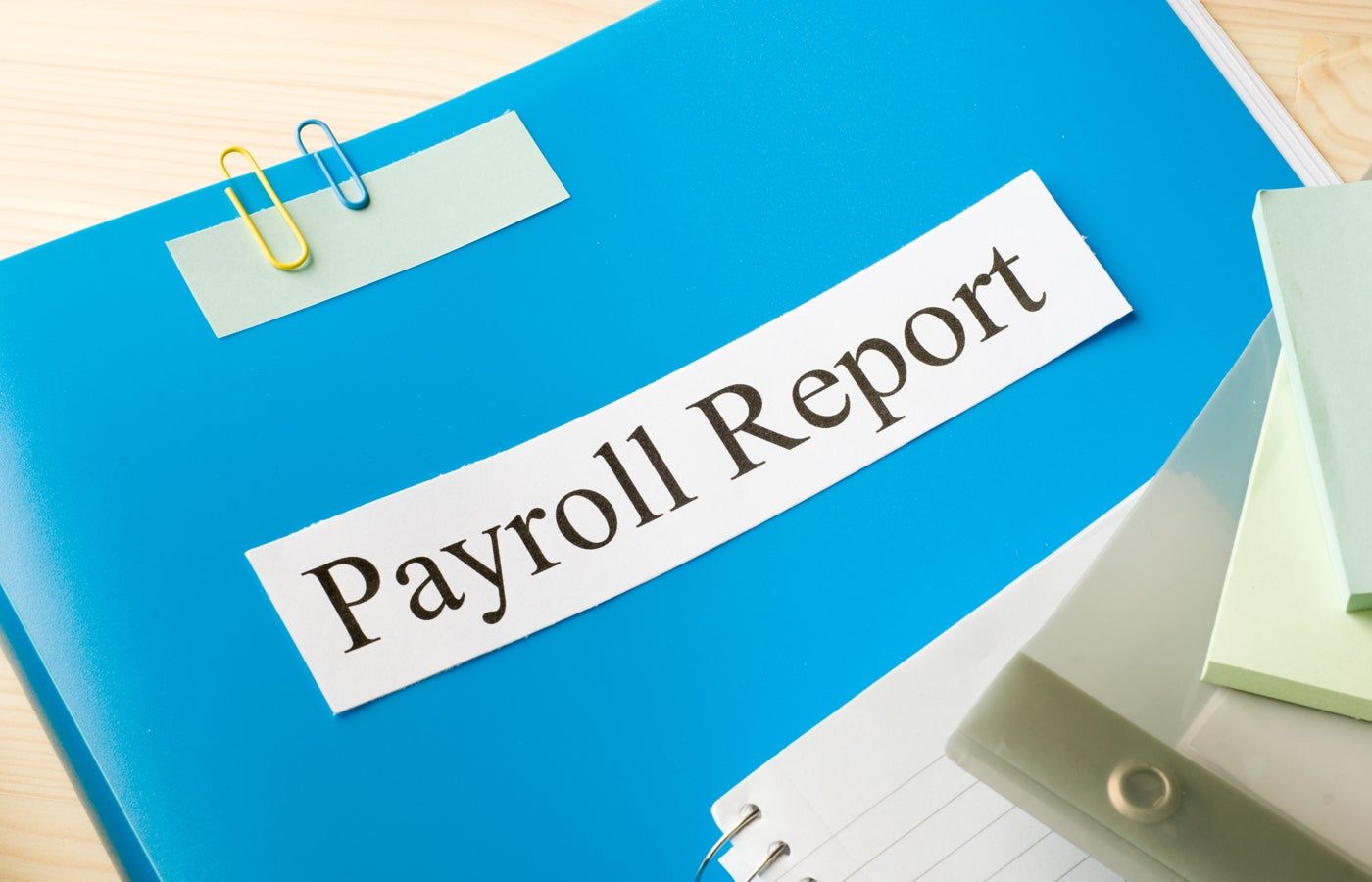Payroll reports serve many purposes, from verifying payroll tax calculations to filing business taxes. There are several types of payroll reports and related forms to choose from, which can be a little confusing to navigate.
Continue reading to learn which payroll reports must be filed with the U.S. government and how often.
3
Paycor
Employees by company size
Micro (0-49), Small (50-249), Medium (250-999), Large (1000-4999), Business (5000+)
Micro (0-49 employees), small (50-249 employees), medium (250-999 employees)
Micro, Small, Medium
Characteristics
API, check printing, document management/sharing and more
What is a payroll report?
A payroll report is a summary document that includes information such as wage rates, hours worked, wages earned, benefit deductions made, taxes withheld, and remaining paid time off. Payroll reports are used to verify tax payments and other financial information.
Benefits of payroll reports
Payment accuracy
Regularly checking your payroll reports will help you confirm that all payments are accurate and detect early warning signs of fraud.
Legal and tax compliance
Correctly and consistently tracking wages and deductions will facilitate quick, error-free tax filing at quarterly and annual intervals, reducing the risk of an audit or fine.
Registry mantenance
Frequent payroll reporting creates a transparent paper trail that will help you quickly gather all the necessary information in the event of a potential audit.
PTO monitoring
Payroll reports will help you see how much paid time off employees are taking, whether it's too much or not.
Budget and financial management.
Payroll reports are one of many different types of reports that can help with accurate budgeting and forecasting, improving the financial health of your company over time.
Types of Payroll Reports Employers Must File
Model 941
Form 941 is called the Employer's Quarterly Federal Tax Return. It includes information such as wages paid to employees, federal income tax withheld from employees' wages, and employees' contributions to Medicare and Social Security taxes.
Model 944
Small businesses that are allowed to file taxes annually (rather than quarterly) will file Form 944, the Employer's Annual Federal Tax Return, as opposed to Form 941. Businesses that are allowed to file Form 944 They generally owe less than $1,000 in federal income. Medicare and Social Security taxes for the entire year.
Model 940
Form 940 is called the Federal Employer Unemployment Tax Act (FUTA). Payments are normally due once a year, on January 31 of the following calendar year.
Form W-2
The W-2 form is called the Wage and Tax Statement and lists the total gross wages, some tax deductions, and benefits for each employee. Employees need this form to file their individual taxes, which is why employers must provide copies of Form W-2 to employees and all applicable governments by January 31 of the following calendar year.
Form W-3
Form W-3 is called the Transmittal of Wage and Tax Statements. Summarizes all of a company's wage and tax filings for the Social Security Administration. Form W-3 is due along with Form W-2 on January 31. Forms W-2 and W-3 should not be confused with Form W-4, which is a different document required to run payroll in the first place.
State Payroll Reports
Each state has its own laws about when payroll reports must be filed and what forms must be used to file them. Check your state laws to ensure you have the most up-to-date information and deadlines.
Local payroll reports
Some cities and counties also charge additional income taxes, requiring the filing of additional payroll forms and reports. Due dates can be annual or quarterly; Check your local laws to determine if you must file additional reports.
Types of other payroll reports
Payroll Summary Reports
These reports show high-level information, such as gross and net wages and tax withholdings for a given date range. Payroll summary reports can be created for individuals, teams, departments, or the entire organization.
Detailed payroll reports
This is a more detailed report that shows contribution and compensation information line by line, usually for a single employee.
Payroll Tax Responsibility Reports
These reports show how much payroll taxes employers have withheld from employees' salaries, how much they have paid to government agencies, and how much they still owe.
Retirement contributions
This report summarizes contributions made to retirement accounts by both employees and employers.
paid time off
These reports show how much time employees have taken during the year to date and how much PTO they have left in their balance.
Workers Compensation
These reports are used to accurately calculate workers' compensation insurance premiums based on the current total payroll amount.
Payroll service charges
This report summarizes the costs associated with the payroll service provider, such as software costs and payroll processing fees.
Payroll Report Example
This OnPay payroll report example shows high-level information for the entire small business, which consists of six employees. As you can see, it breaks down information about salaries, taxes, and PTO, each on its own line, so the business owner can clearly see how much has been paid and how much is still owed.
How to run a payroll report
Most payroll software platforms make it extremely easy to generate payroll reports. While each has its own unique interface, most follow the same basic steps to generate a payroll report:
- Log in to the payroll software.
- Navigate to the reports menu.
- Select the payroll or tax report you need.
- Make adjustments to the year, payroll calendar, or employees as necessary.
- Generate the report and then export, share, or print it for your records.
Payroll Report FAQ
How do I make a payroll report?
To create a payroll report, navigate to the reports section of your payroll software. Select the payroll report, set parameters for dates and employees, then generate the payroll report and share it as needed.
What is a monthly payroll report?
A monthly payroll report generally shows wages paid to employees, federal income tax withheld from employees' wages, and employees' and employees' contributions to Medicare and Social Security taxes during the reporting period. a calendar month. It may also include additional information, such as PTO balances.
What payroll reports are due quarterly?
Form 941, the Employer's Quarterly Federal Tax Return, is the only federal return that must be filed quarterly. Check with state and local governments to see if there are additional reports you must file quarterly.
What payroll reports must be filed annually?
The following payroll reports must be submitted annually:
- Form 944, Employer's Annual Federal Tax Return.
- Form 940, Employer's Annual Federal Unemployment Tax Law.
- Form W-2, Wage and Tax Statement.
- Form W-3, Transmission of Wage and Tax Statements.
- Form 1099-NEC, Nonemployee Compensation.
For more information, see our guide explaining when payroll taxes are due.
What are payroll reports for self-employed people?
As a self-employed person, you will likely receive Form 1099-NEC from your clients instead of Form W-2. You will use the information to file an annual tax return. You will also likely be required to file estimated tax payments quarterly throughout the year.












